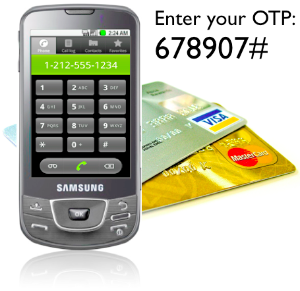
A one-time password (OTP) is a password that is valid for only one login session or transaction. OTPs avoid a number of shortcomings that are associated with traditional (static) passwords. The most important shortcoming that is addressed by OTPs is that, in contrast to static passwords, they are not vulnerable to replay attacks. This means that, if a potential intruder manages to record an OTP that was already used to log into a service or to conduct a payment or any other secure transaction, he or she will not be able to abuse it since it will be no longer valid. Manage a OTP service with an IVR powered by VoiceXML like VXI* is really easier, allowing a dynamic programing to connect any backoffice system.
What is an IVR transaction with OTP?
IVR + OTP (interactive voice response) transactions are those made over the phone where certain credit-card details are to be entered into an automated system in order to make payment to a merchant for the purchase of his goods/services.
What is an OTP example?
An OTP is a four or six-digit code that you obtain from your card-issuing bank. It is a single-use password, valid for a limited period from the time of placing a request for it. You will need to obtain an OTP before every IVR payment transaction or any other process.
How to obtain an OTP?
You can obtain an OTP through various modes like your card-issuing provider’s website, the Internet, SMS, IVR etc. The mode varies from business to business.
How to use the OTP?
The OTP is required at the time of making payment or any other secure transaction on the IVR, where you will be prompted to enter it along with the other details like your account number, personal ID, credit-card number, card expiry date and CVV number.
More information: